Disclaimer: adhere to professional medical advice over any suggestions in this blog!
We’ve all experienced the gnawing pain of missing out on great surf. Whether you’re held up in the office and can’t make that sunset session or just live really far from the sea. It sucks. However, things become a whole lot worse when this isn’t just a one off occurrence.
When plagued by injury, time out of the water can be anything from a few weeks to months, or in dire circumstances even years! Beware, the fomo will arrive with a vengeance. Prepare for intense feelings of self-pity and aggression towards anyone who can carry a board and paddle out. However, despair not. I’m speaking from experience when I say that even the most acute surf fomo can be survived.
Finding inspiration
I was out of the water for 10 months with a shattered pelvis following a skateboard versus car incident in Japan. Operated on, stitched up and wheelchair bound, with months of hydrotherapy and physio ahead, my surf future looked bleak.
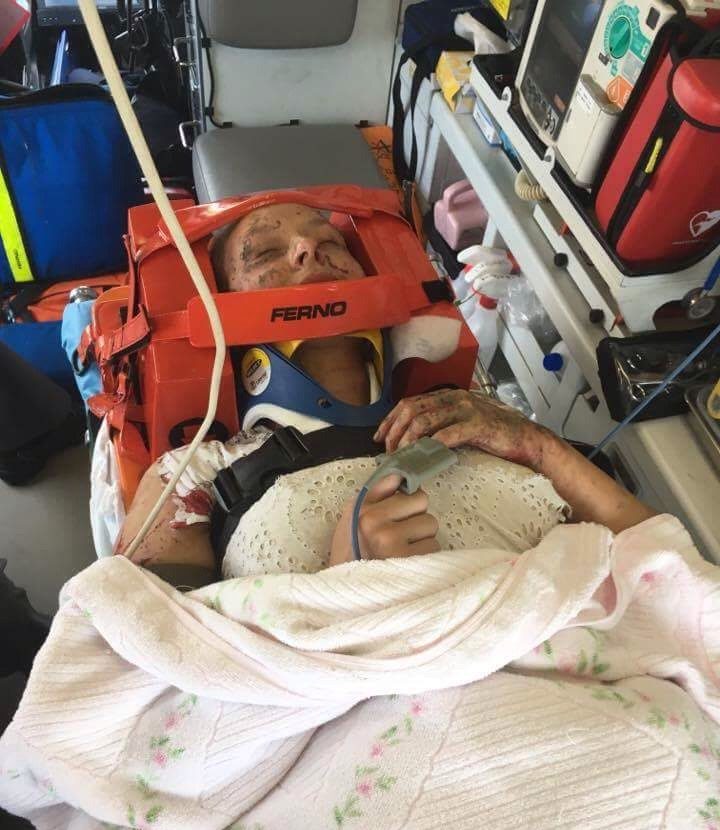
A pretty scary moment!
Wallowing and in search for empathy I sent a Facebook message to Bede Durbidge, asking for his advice on preparing to surf again and how to keep my spirits up in the meantime. To my delight, Bede replied with some generous words of wisdom which I shall share below.
(For those who don’t know, Bede competed for thirteen years on the WSL with multiple tour wins, finishing as runner-up in 2008. In 2016 he suffered a near career-ending injury at the Pipe Masters where he severely broke his pelvis).
Acceptance
Face facts, you’re not going to be surfing anytime soon. Torturing yourself on Magicseaweed won’t get you on a board any quicker but will make you sad, bitter and unpleasant to be around. Some may call this sacrilege, but there is more to life than surfing!
Referring to his own recovery, Bede said:
‘I immersed myself in other things in life that [weren’t] physical to keep my mind active’ and ‘tried to switch off from surfing.’
Easier said than done, but well worth a try. Once you’re on that road to recovery, see the time out as an opportunity to try new things or learn different skills – namely patience! Endeavour to switch off from social media when you know a good swell is coming. If you’re lucky enough to be able to wave-check from home, keep all curtains closed until the conditions are rubbish again.
(Evidently I did a terrible job at this, see image below.)
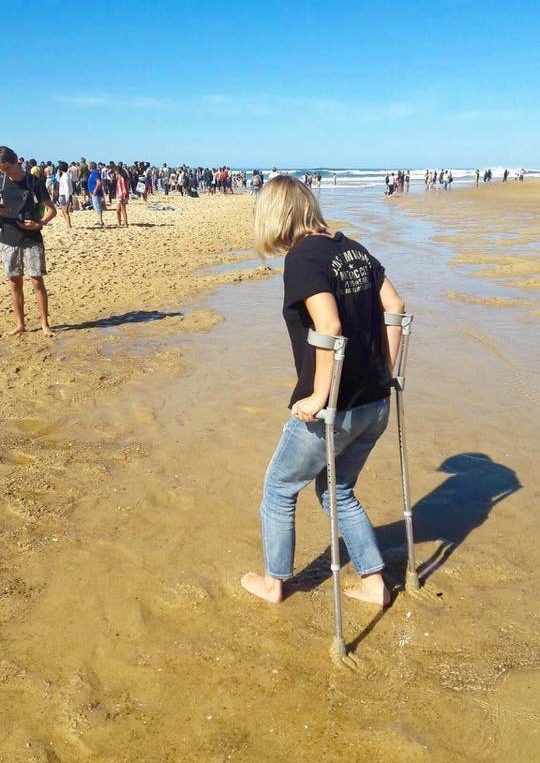
Struggling through the sand to watch the Hossegor Quick Pro
Waves will always break
On a more serious note, it’s important to heal properly and not surf prematurely, however tempting!
Bede: ‘Don’t rush your recovery. If you rest properly at the start and go slow you will actually get back faster to surfing again. Every day down is another step closer to full recovery.’
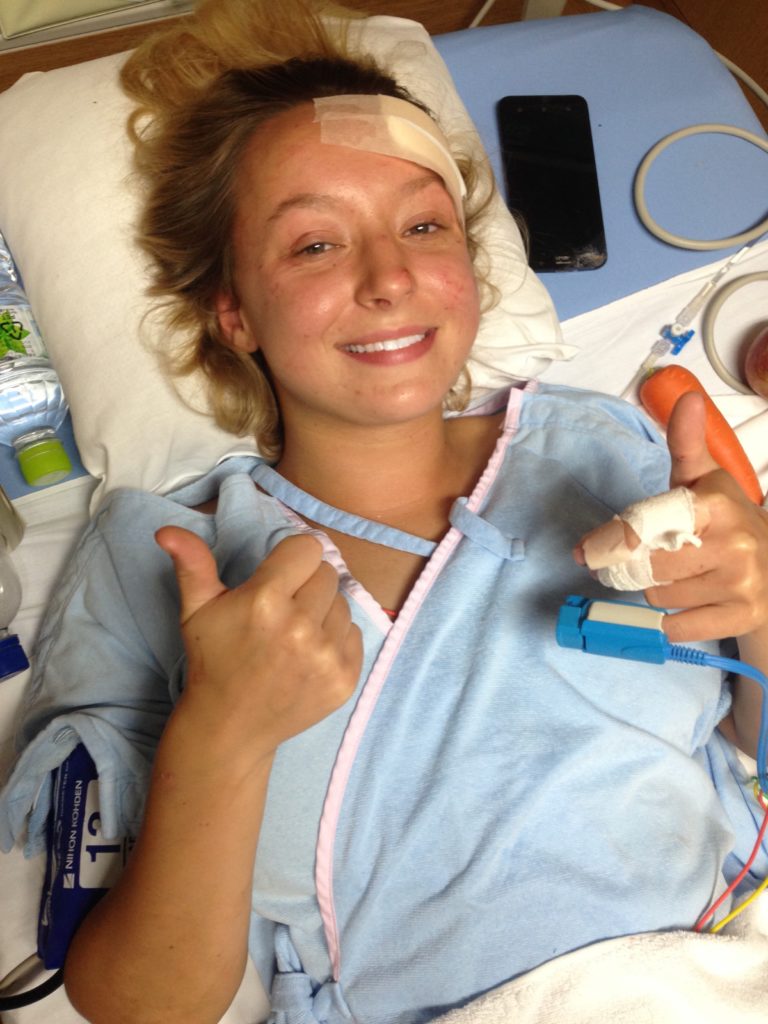
Staying positive!
Hydrotherapy and alternative exercise
Hydrotherapy works wonders when recovering from an injury.
Bede: ‘Once I got out of the wheelchair…I started hydrotherapy daily and did that for a few months and got my confidence up to walk again.’
Practicing movements and exercises in a warm swimming pool can help you to regain muscle memory, flexibility, strength and balance. It’s low impact and the resistance from the water prevents you from moving too rigorously and causing further damage.
Once strong enough, swimming is a great way to exercise the whole body and re-build paddle strength. You can isolate muscles using a pull buoy or hand float and work specific areas that need strengthening.
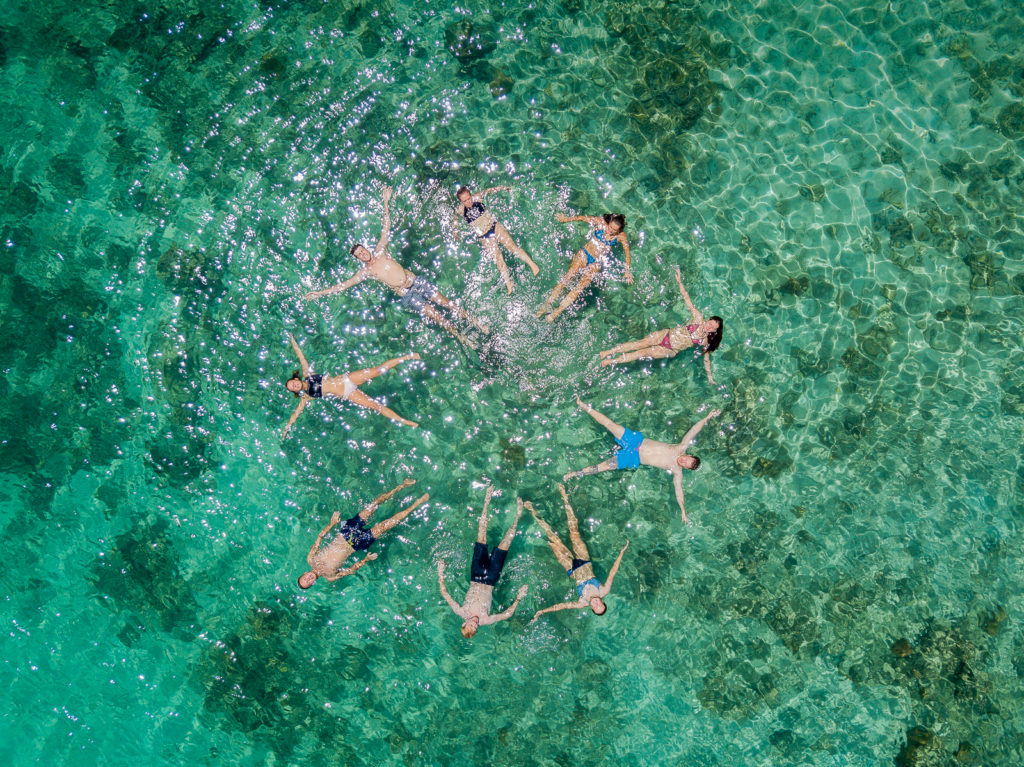
Sugba Lagoon. Photo credit Gwil Thomas
Embrace your role as designated surf photographer
‘Ah mate, if you can’t surf would you mind getting a few shots of me? Really want to see how my cutback is looking?’ Not music to most of our ears but resist that sassy reply and instead reach for the zoom lens. You never know, it may feel good to help a buddy out? (Alternatively, you could *accidentally* spend the whole session shooting someone else..)
Don’t underestimate the bodyboard!
Surfers have an entrenched snobbery towards those who prefer to lie down rather than stand up. I urge you to check your prejudices and give bodyboarding a try. Injury dependent of course, this less dynamic form of riding waves may be the perfect intermediary step towards surfing again. White-water bodyboarding allowed me to rediscover the childish delight of cruising all the way to the sand, whilst putting minimal strain on my hips and legs.
Have fun
When standing in the shallows, about to paddle out for your first session back, try not to have unrealistic expectations. Take it easy and don’t put too much pressure on yourself. My first post-injury surf was at Harlyn in the depths of the Cornish winter. That day I claimed every terrible 2ft mushy wave I caught. I felt immensely lucky to be up and riding again and unashamedly embraced the stoke!
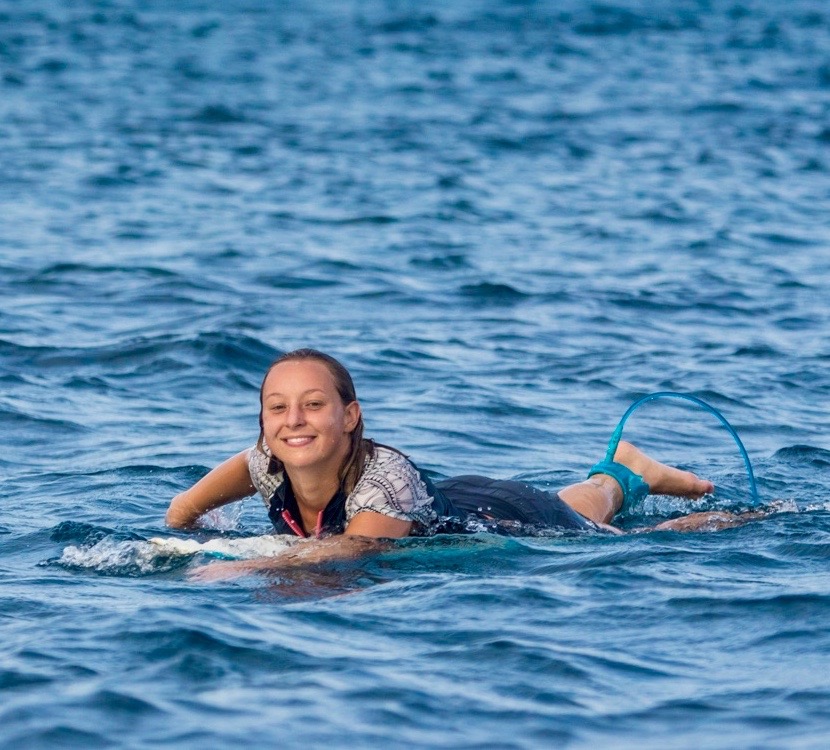
Recovered and loving life in a warmer climate with the TTR crew. Photo credit Gwil Thomas